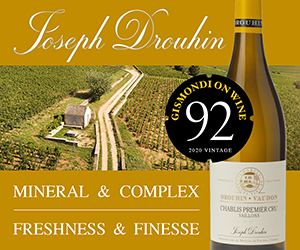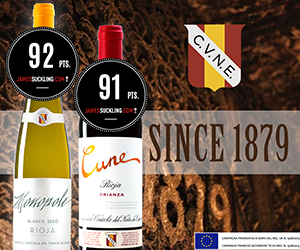By the time you read this, Vancouver International Wine Festival organizers will have announced France, or to be more precise, its many wine regions to be the theme of the 2014 festival.
Talk about a difference in wine philosophy. Local wine drinkers will have to make the hyper jump from the New World varietal wine universe to the Old World constellation of appellations and be prepared to talk terroir.
The French have never been big "grape" nuts but much rather prefer the all-encompassing term of terroir and have made it the foundation of their appellation system. The terroir word is never easy to come to grips with but it makes a lot of sense if you want to differentiate your wines based on site/soil, and that's exactly what they do.
You can expect a large group of champagne producers to be present and accounted for in 2014 to share the glories of their magnificent old seabed of vineyards. The world's finest bubbly clearly benefits from those chalky soils that over time and many geological events have come to the surface. Trapping heat during the days and releasing it at night, in a cool region, is a good example of how certain terroirs can be better than others for certain grapes, and how appellations get delineated.
Grapevines do not like wet feet so when you see the excellent draining galets (round stones) of Châteauneuf-du-Pape and feel the warm, dry Mistral wind in your face, you can understand why the Rhone Valley is home to so many fabulous red wines. Given the current excitement surrounding Cotes du Rhone wines, there will be numerous producers from both the south and north Rhone in Vancouver next spring.
You could say it takes a bunch of villages to make an appellation, but when it comes terroir there is much more. In places like the Rhone or Bordeaux, centuries of grape growing have revealed that the best wines come from grapes that fully ripen. Yet those grapes must get there slowly and live on the edge of that parameter. In other words, early-ripening grapes planted on warm sites do not make great wine and nor do late-ripening grapes perform well on very cool sites.
What the French, and now many others, know is that matching the right grapes to the right sites produces the best wine results. You can see now how terroir can be a complex idea that really can't be defined to anyone's satisfaction.
Getting back to the Rhone, we see Syrah thriving on the cooler slopes of the northern Rhone around the villages of Hermitage, Crozes-Hermit-age, Cornas and St. Joseph, while further south in the warm vineyards of Châteauneuf-du-Pape, the later ripening Grenache and Mourvèdre do well in the stony soils. In Bordeaux, Merlot thrives in the heavier clay soils of Pomerol and St. Emilion on the Right Bank while in Pauillac and St. Estephe's Left Bank, the grape stars are Cabernet Sauvignon and Cabernet Franc, courtesy of the very poor gravelly soils of the Gironde. If you are thinking horses for courses, you would right.
Speaking of horses, it could be a festival of organic, biodynamic and sustainable wines, and the majority of them may not be certified. It's another curiosity of French wine and another layer producers can add to the patina of ter-roir. I'll mention natural wines here but that's an even deeper discussion for another time. You can expect to see some in the tasting room next year.
To be fair, grapes are not far from anyone's mind. In the Loire Valley, they love to talk Sauvignon Blanc, Chenin Blanc and Cabernet Franc but in the end they have succumbed to their respective appellations: Sancerre, Anjou and Chinon.
Read more: http://www.vancouversun.com/life/Talking+terroir/8040408/story.html#ixzz2NMHbdl89
Château Gaudrelle Vouvray 2011, Touraine, Loire, France
Price $25
UPC 3466600910069
Score 87/100
Remarks Now under screwcap look for honey, lees, apple skin, baked pear, grassy, oatmeal aromas. The attack is crisp, the fruit juicy but slightly sweet on entry with citrus, baked green apple, honey, guava, grapefruit and nettle flavours. Crisp and juicy with the sweetness to balance spicy sushi or other Asian dishes.
Fouassier Père et Fils Sancerre Les Romains 2011, Sancerre, Upper Loire, Loire, France
Price $30
UPC 00642917000027
Score 89/100
Remarks The 3.5ha Les Romains vineyard is over 25 year old and its clay over chalk subsoil known locally as "terres blanches" is the perfect base sauvignon grapes. Uncertified but essentially organic we like the pure floral notes on the nose mix with wet rock, chalk, minerality, bits of guava and grapefruit. The palate is similar with tastes of lemongrass, pear, green apple and honey. A wine made for West Coast seafood or with a simple piece of fresh chèvre.
Domaine Christian Moreau Chablis Grand Cru Les Clos 2010, Chablis, Burgundy, France
Price $68
UPC 089744423672
Score 94/100
Remarks One of the great terroirs the Les Clos site offers up green apple, pear, honey, floral, seashell and waxy aromas. The palate is juicy and creamy but dry with more seashell, green apple, pear skin, vanilla, spicy lees, creamy, lime flavours. Wonderful finesse and length with 3-7 year aging potential. Excellent quality here in affordable white Burgundy.
Shatter Grenache 2010, Roussillon, South of France, France
Price $40
UPC 848656000025
Score 89/100
Remarks Shatter is a joint effort between Americans Dave Phinney and Joel Gott grown on the black schist and slate rock near the town of Maury in the Roussillon region of France. The nose is a mix of spice, prunes and raisins. On the palate it is smooth with some grainy tannins and more liquorice, smoky, peppery, savoury, vanilla, kirsch, raisin and dried fig flavours. Lots of intensity here including a warm finish. A perfect winter red for stews, braised meats and cheese.
Domaine Faiveley Nuits-St-Georges Les Porêts Saint-Georges 1er Cru 2010, Burgundy,
France
Price $97.00
UPC 3351001010916
Score 94/100
Remarks The 2010 Les Porêts is a larger than life version of Nuits-St-Georges. Lots of black fruits aromas permeate its earthy forest floor nose that can entertain for minutes. This is a much more modern style Burgundy from Faiveley with clean fresh fruit, fleshy rich, silky tannins and length. A perfect foil to duck, pheasant or roasted chicken you can drink this now or let it soar in the bottle through 2018.
Chateau d'Armajan des Ormes Sauternes 2007, Bordeaux, France
Price $30 (375mL)
UPC 3419466168754
Score 89/100
Remarks Sauternes gets my sweet wine vote given its propensity to be far more complex than icewine. Look for fresh spicy, floral, honey, baked peach, light egg yolk aromas with baked grapefruit rind and vanilla aromas. The attack is soft and unctuous with baked pear, honey, warm peach, vanilla, spicy floral and grapefruit flavours. Fine acidity and balance. Drink now.

 quicksearch
quicksearch






